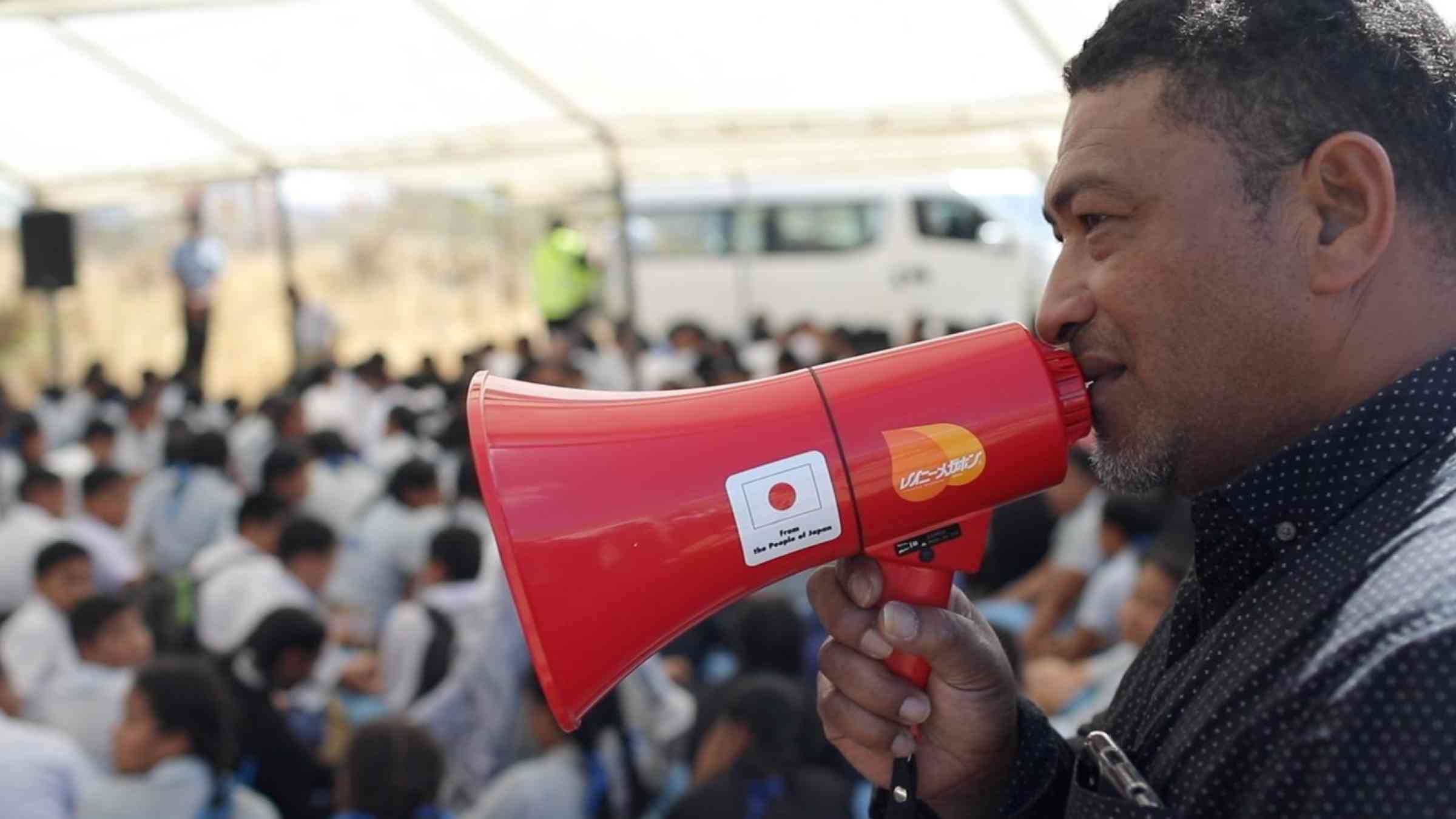Two years on, the Tonga tsunami shows effective risk communication saves lives

Nova, a local resort owner, remembers vividly the day the tsunami struck. “I was down in the village when they called me. First I was scared when they told me that the water is on the street. I was thinking first that I have to come back to my house and close all the windows. But then they told me, please don't go back. It's very dangerous. So we left”
Like many others that day, Nova warned and aided others as she evacuated inland and to high ground. Across the islands, the community received the early warning message through radio, word of mouth, and they recognized the signs of the impending danger from traditional knowledge passed down through generations.
When Nova returned, everything was destroyed. The seven resorts that had fronted the western coast lay in ruins.
The largest volcanic event of the century
January 15 marks the second anniversary of Tonga’s Hunga Tonga-Hunga Ha’apai volcano and tsunami which affected 80% of the South Pacific island, and tragically took four people’s lives. The country suffered economic damages of more than 36 percent of their GDP with vital sectors related to tourism, fisheries and agriculture severely impacted.
The eruption was the largest volcanic event of this century and produced the fastest underwater flows ever recorded. Waves up to 20 meters high hit the main island of Tonga and the cascading effects of the tsunami were felt much further afield – even resulting in an oil spill off the Peruvian coast, more than 10,000 km east.
On top of this, the undersea communications cable which connects Tonga to the world was damaged, cutting off telecommunications for five weeks until it could be restored.
Investigations and improvements
Two years on, many improvements have been made, including scientific investigations into the causes of the event, and work to accelerate the coverage of early warning systems.
Professor Shane Cronin from the University of Auckland, explained:
“I've been researching (this volcano) for a while. With volcanoes, normally they'd produce small tsunami…so most of our tsunami warning systems up to date have not included volcanoes as a source for tele tsunami. The Honga eruption was huge in terms of producing a tsunami, and that was unusual in our observation. What we're trying to do is now understand what kind of volcanoes could produce a similar type of event and how frequently we might expect it.”
A key lesson from the tsunami is that a high level of risk awareness among the population, combined with effective early warning systems, saves lives.
Public awareness saved lives
“Immediately straight after the blast, urgent tsunami warnings were issued through the radio” said Ofa Fa'anunu, Director of Tonga Meteorological Services. But according to Fa'anunu, what saved the most lives were the continuous efforts on public awareness before the tsunami struck.
“We had quite a vigorous tsunami awareness campaign much earlier” said Ofa Fa'anunu, “We did the tsunami awareness to all the outer islands of Tonga. They understood what to expect in terms of tsunami, but also they have their own traditional knowledge, information passed down from earlier generations and their experiences, the stories that come down, the people understand that with a major eruption like that, that tsunami will most likely follow. A combination of all of this helped to strengthen the early warning system, it helped that we reacted early.”
“The schools together with the community, we all brought them into the town hall and we went through a number of scenarios of earthquakes and tsunami visualization” added Fa'anunu.
This included a series of events to mark World Tsunami Awareness Day 2021, just three months before the volcanic eruption, involving competitions across schools, evacuation drills and dedicated TV and radio programming explaining tsunami risk.
People knew what to do
Thanks to all these efforts, people knew what to do and were able to get to safety, an achievement that also impressed neighboring countries as they tried to make contact in the immediate aftermath.
“It wasn't until around 24 hours later we started having satellite phone contact and we heard the remarkable news that everyone had evacuated very well and that there were only a small number of fatalities. We were shocked and surprised by how such a big event caused so little loss of life,” Shane Cronin noted.
Looking to the future
Tonga continues to strengthen its early warnings and preparedness by conducting drills across the community and installing new evacuation maps to raise people’s awareness.
The country is implementing the Weather Ready Pacific Program, interlinked with the Early Warnings for All initiative, to be prepared for disasters and boost resilience. Every village now has a disaster management plan and, nationally, Tonga recently introduced new disaster risk management legislation and was the first country globally to adopt an integrated strategy on both climate adaptation and disaster risk reduction. UNDRR is collaborating closely with the National Disaster Risk Management Office on resilient infrastructure and together with UNESCO IOC on enhancing resilience to tsunami risk.
Regionally, Tonga is also the Chair of the Pacific Island Forum in 2024, where climate change and disaster risk reduction remains high on the agenda.
Together, the National Disaster Risk Management Office and organisations across Tonga are working daily with communities to support recovery and resilience to future disasters. For Nova, this support makes a big difference:
“It is hard, but what can we do? We have to live with this. We still have something for us to eat, and also we have some help from the government and from overseas and we all get some help from this. We had to make us strong that we have to stay and stand by our own that we have to recover.”